
务实海洋中的抒情岛屿lyrical islands in pragmatic seas
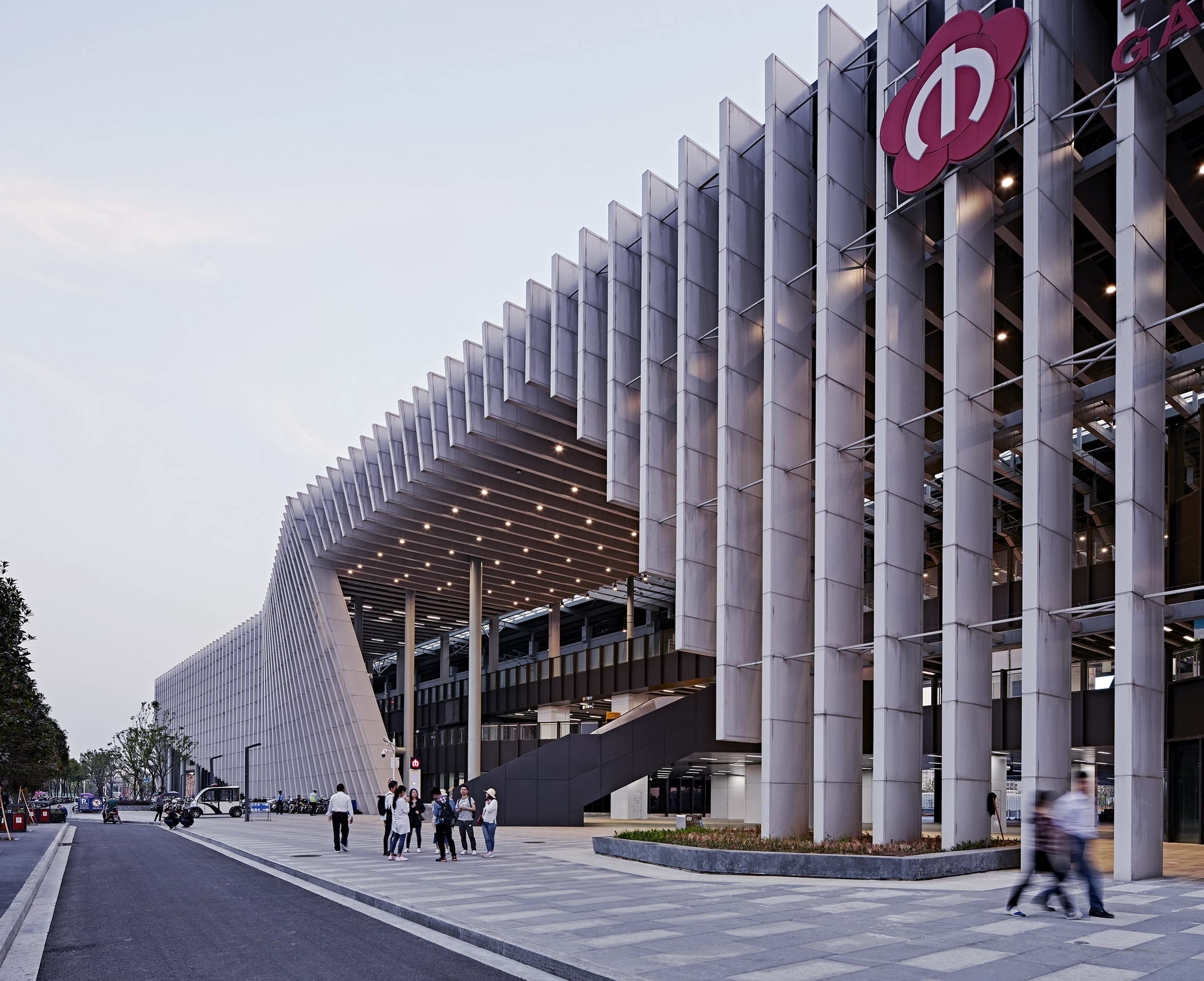
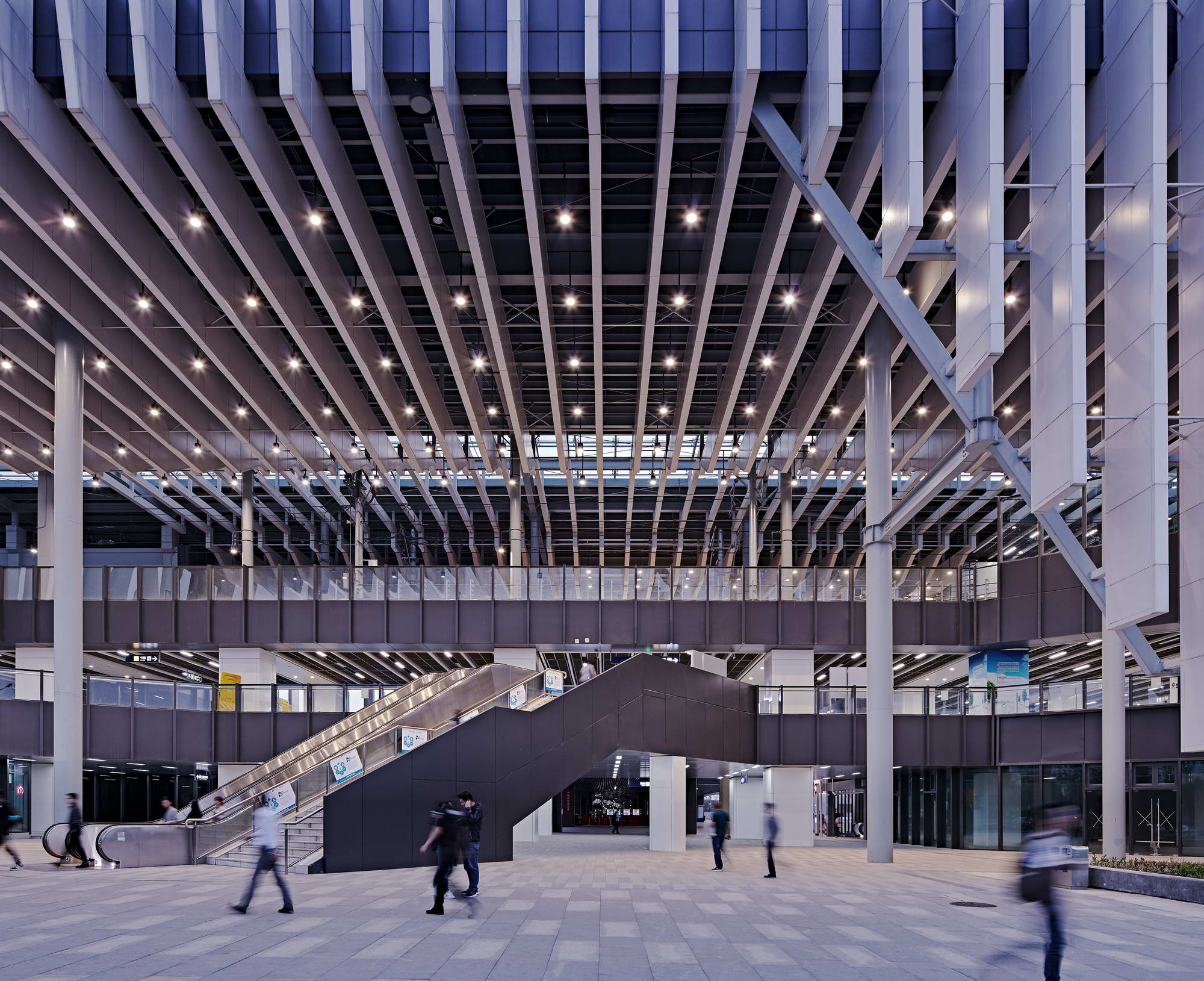
高淳镇即将开通通往南京的轻轨和高速公路,行程将缩短近50分钟,能够很大程度地促进商业发展和人口增长。该项目位于高淳镇北部发展区的新商业中心,将与新的城际公交站及本地公交枢纽相结合。BAU在其间还设置了一个旅游展览中心,以期满足未来附近湖区和慢城区域预计迎来的游客增长需求。
Gaochun town is soon to be connected to Nanjing megacity by both light rail and freeway. A reduced 50-minute travel time will catalyse business development and population growth. The new rail station is located in the town’s planned new commercial centre, within its northern growth district. It is to be combined with a new intercity bus station and local bus interchange. A tourist exhibition centre is included at the interchange in anticipation of growing visitor numbers to this attractive lakes district and Citta Slow region.
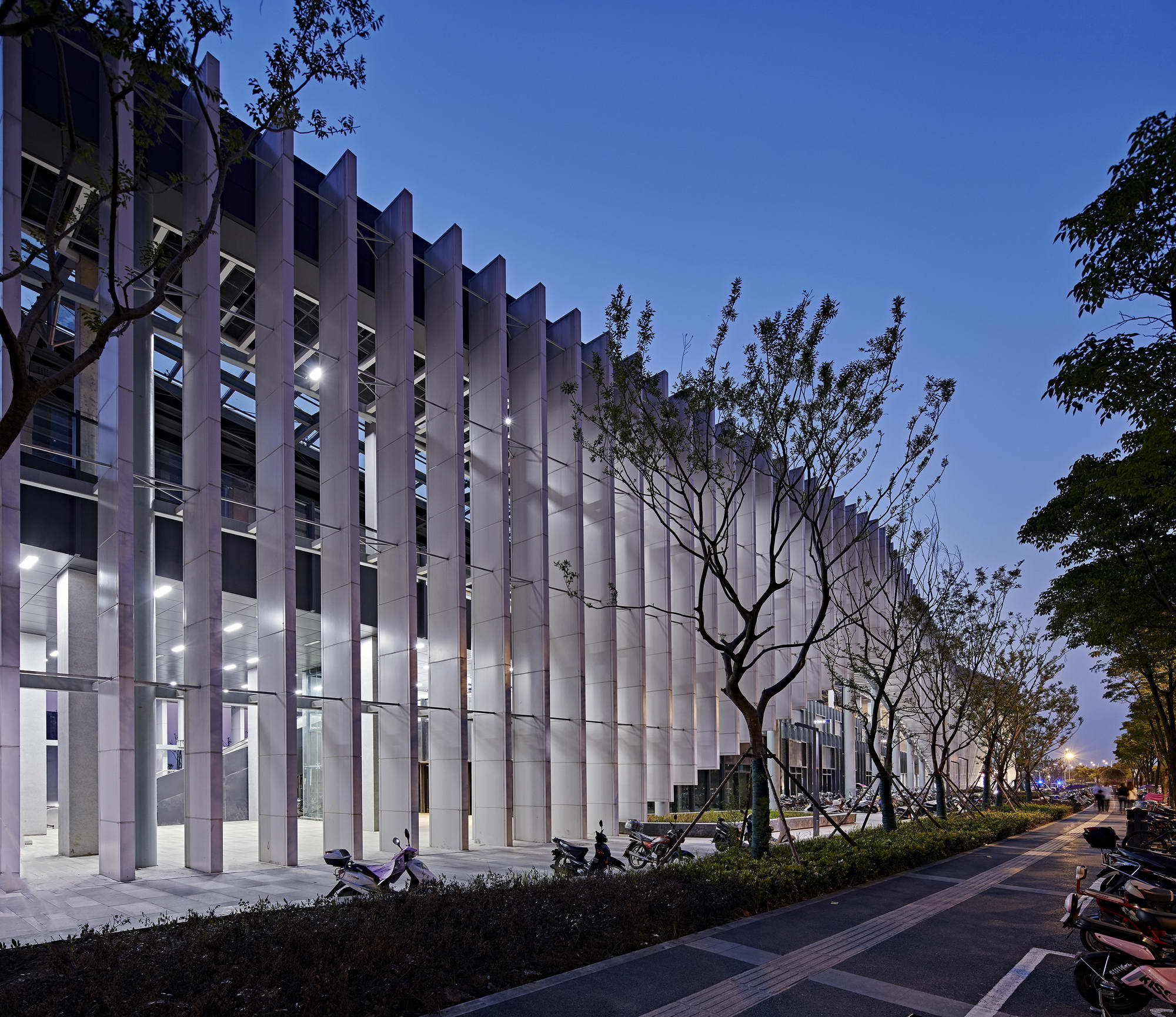
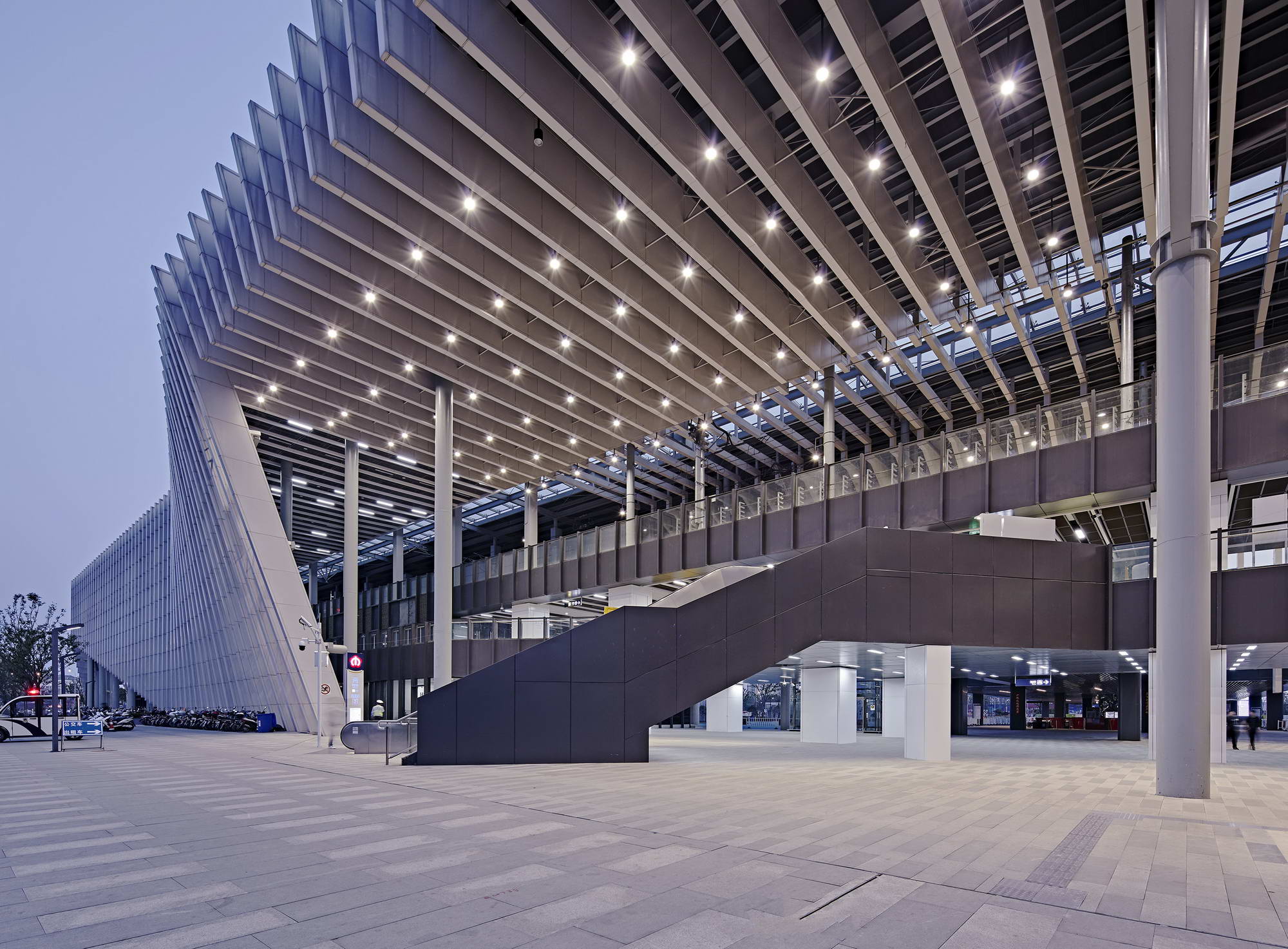
时空结
a knot of space-time
该项目巧妙地连结了四种城市交通系统:火车、公共汽车、私家车和步行网络。它不是只与这些交通系统简单相邻的铁路侧线,也并非只是位于线路末端的终点站。它是一个精心设计的时空结,使四种不同的城市交通系统既紧密整合,又巧妙区分,从而能够有效地避免这些系统交叉可能造成的拥堵和碰撞。
This building sits on, over, and under one of the many intersections of four urban movement systems in Goachun: the train, the bus, private vehicles, and pedestrian networks. It does not just sit adjacent to these systems – it is not a siding. And it does not just sit at the end of line or route – it is not a terminus. It is both a tying together and a keeping apart of the four different systems – it is an elaborate space-time knot that keeps objects and events apart – thus avoiding collisions between trains, buses, cars and pedestrians.
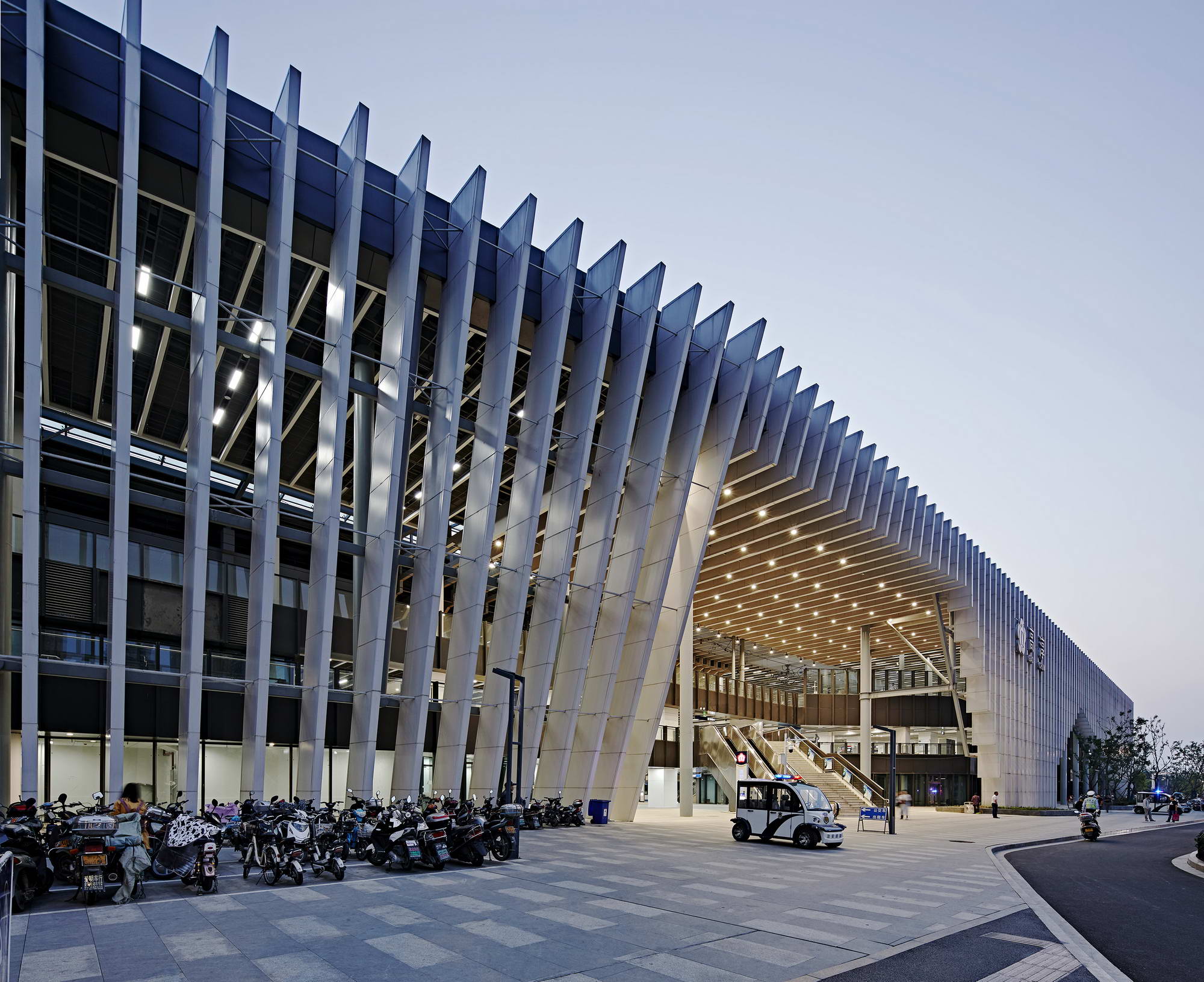
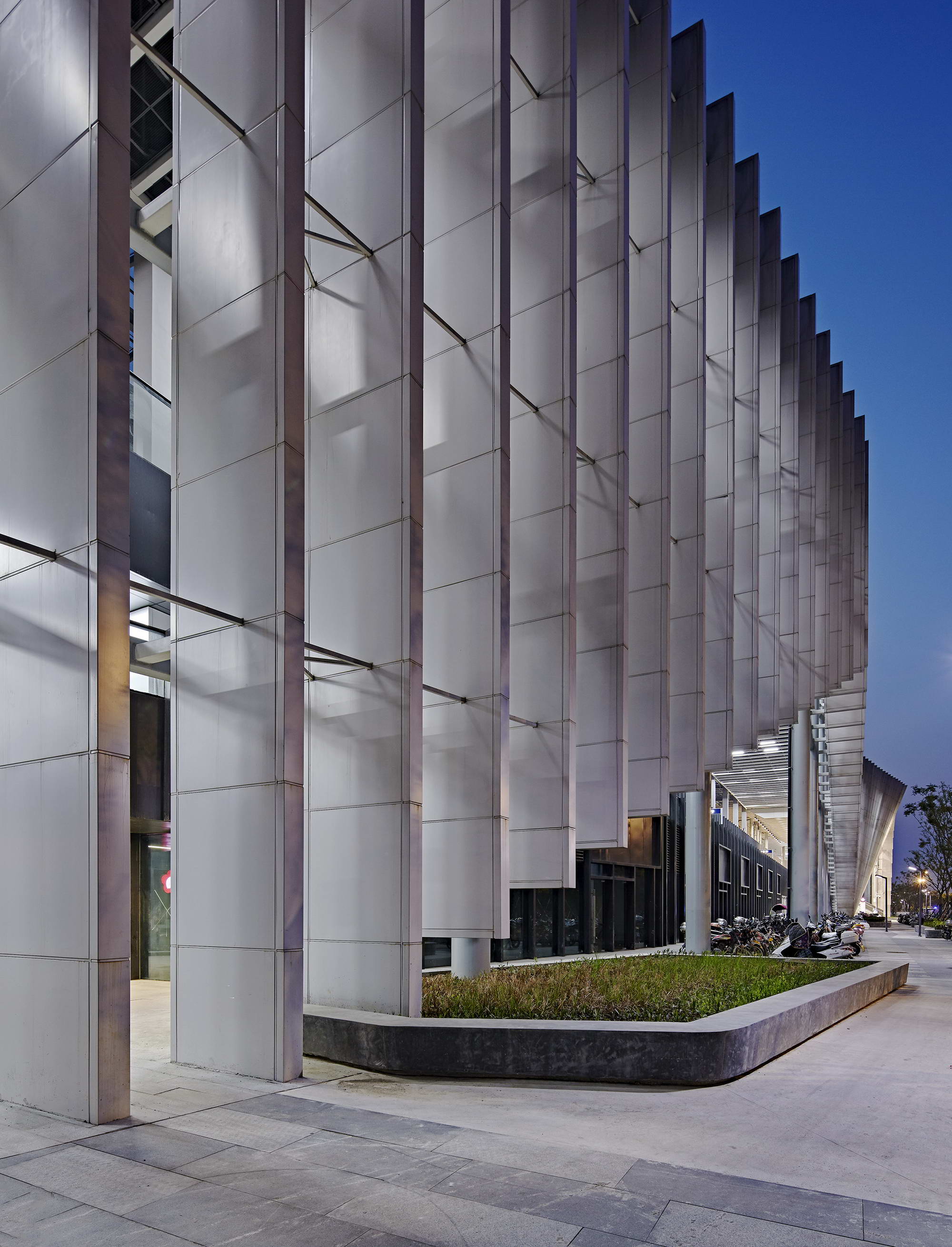
分离流
separating flows
项目底层的地下停车场专门给旅客预留出一条车辆接送的人行通道。地面一层为平衡出入旅客、接送巴士、私家车和出租车提供了重要场所,它的存在使旅客足以安全快捷地换乘不同的交通系统,还能快速通过扶梯和直升电梯到达二层的出发层和站台。
The below ground car-parking space provides pedestrians access to and from their arriving or departing cars. The ground floor is an intense co-existence of pedestrian movements to and from arriving and departing buses, private cars, and taxis. Also present at this level are pedestrians moving to and from the train platforms at the second floor – in fact everything but the trains themselves are present at this highly contested level.The second floor is for pedestrians to gain access to the train platforms and the arriving and departing trains.
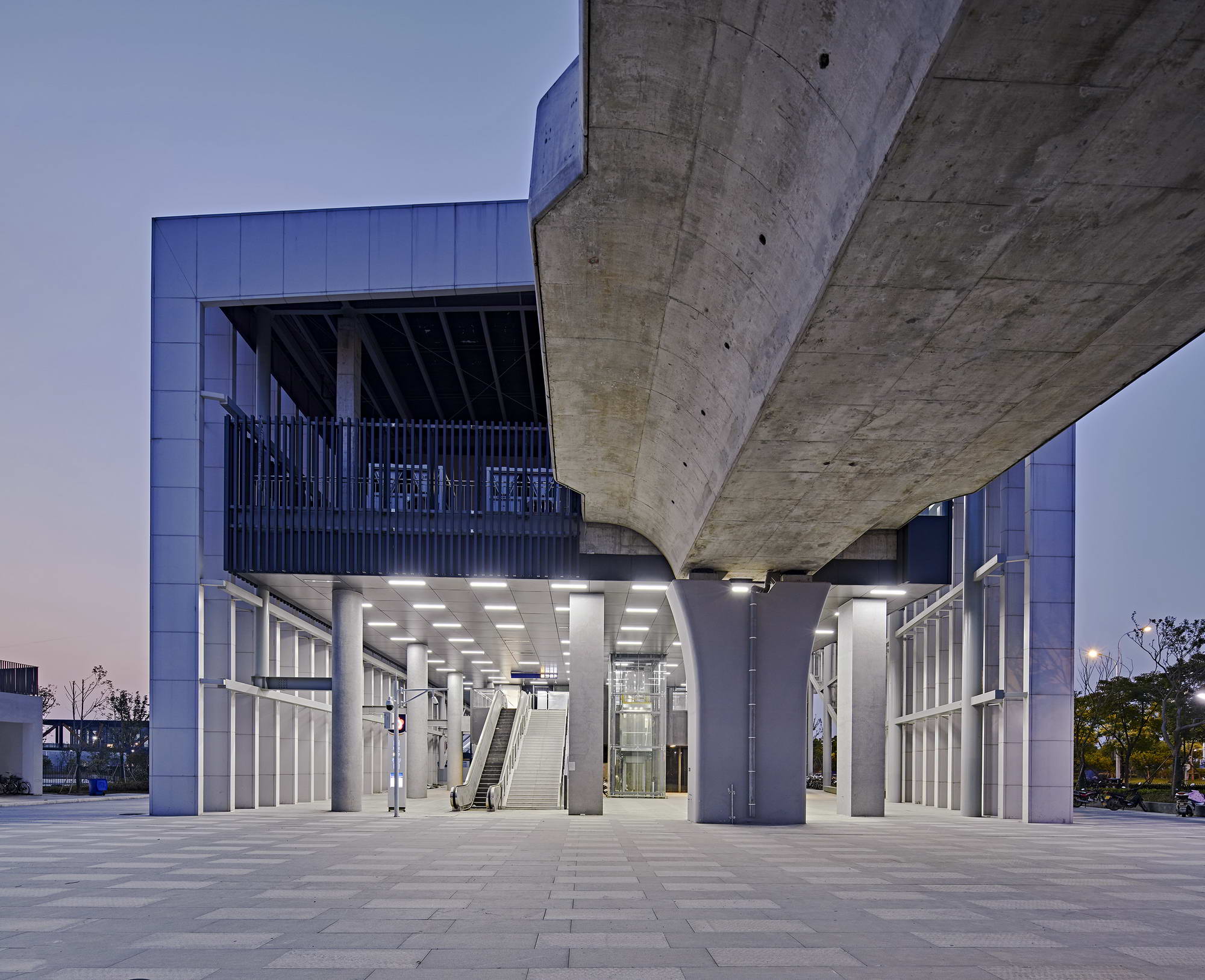
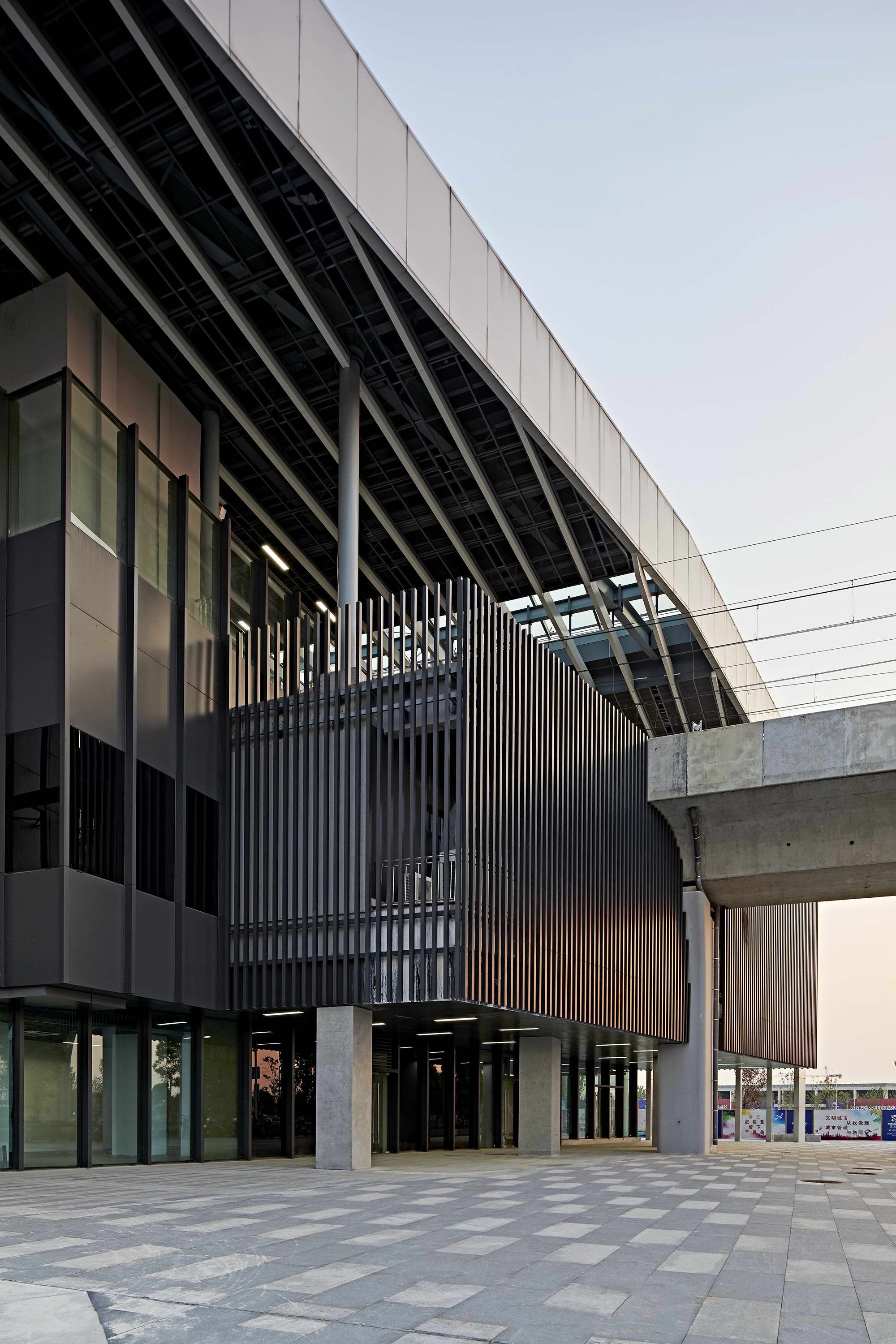
两片海洋
two seas
比起抑制地面层复杂的动线需求,BAU选择接受,并将本项目视作两片海洋:一片沥青海洋(供公共汽车和小型汽车);一片石板路海洋(供行人步行)。
Rather than resist the complex pragmatics of the movement demands at ground floor level, BAU embraced them, perceiving the site as two seas of pragmatics: a sea of bitumen (for buses and cars); and a sea of paving (for pedestrians).
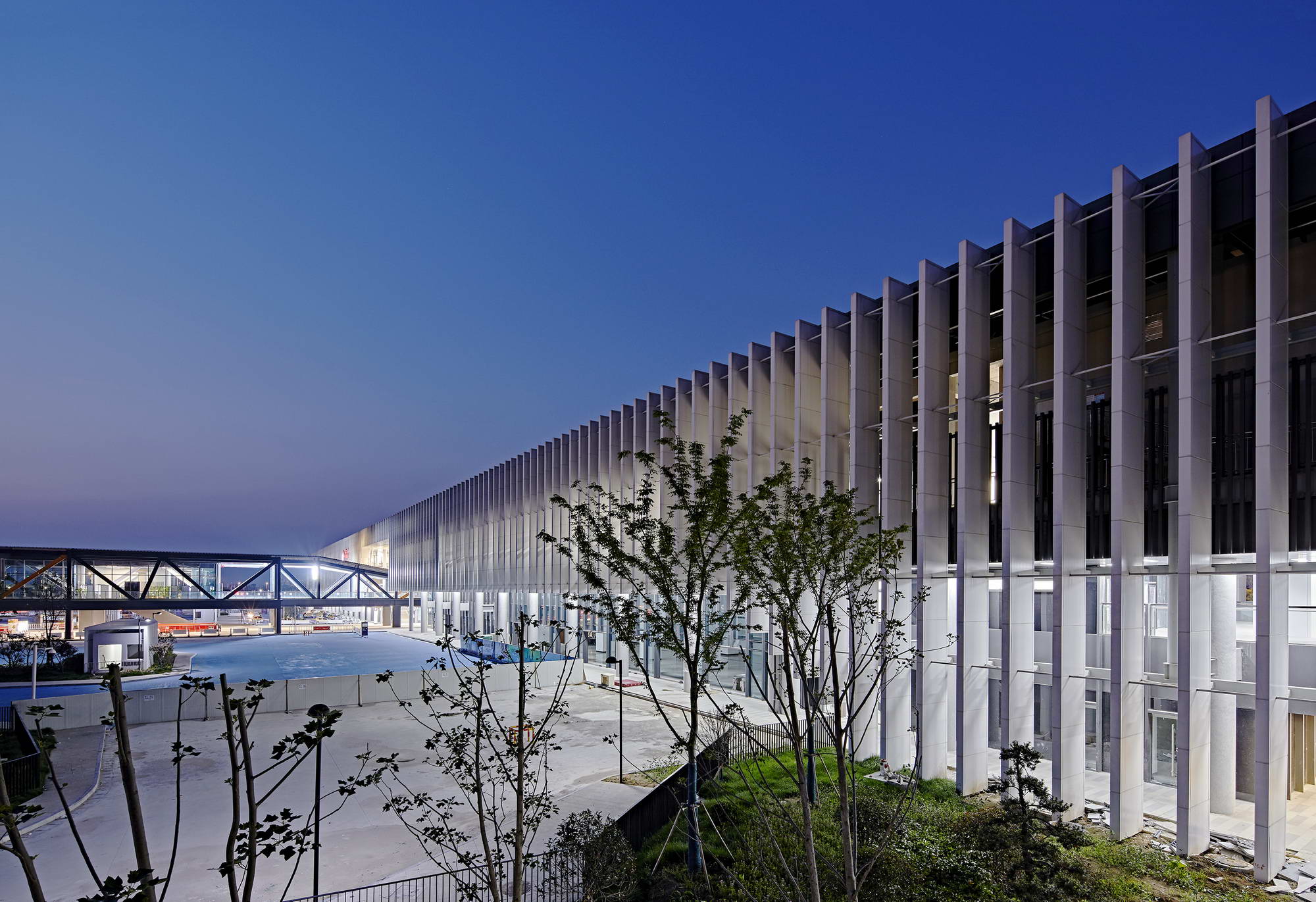
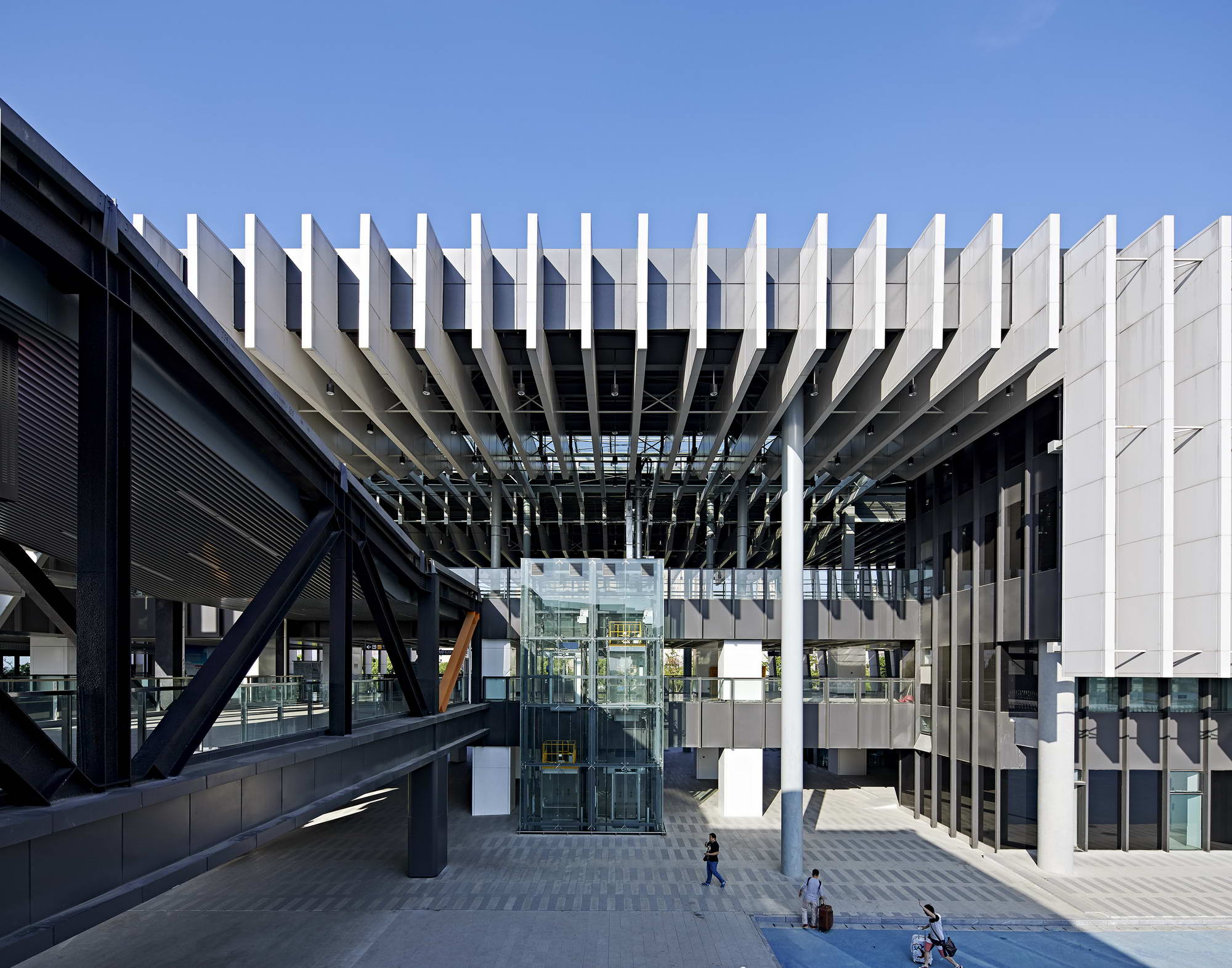
两片海洋相互连结延续,并各有建筑、停车场和植被等穿插点缀。这使得地面循环系统不仅清晰有序,还有效保护旅客的安全。建筑主体也给人带来非常强烈的视觉效果。
Both seas are continuous and both seas have islands of buildings, parking, and vegetation. These two clearly articulated on ground circulation systems are not only legible and safe; they are also visually very powerful when viewed from the adjacent buildings on and off the site.
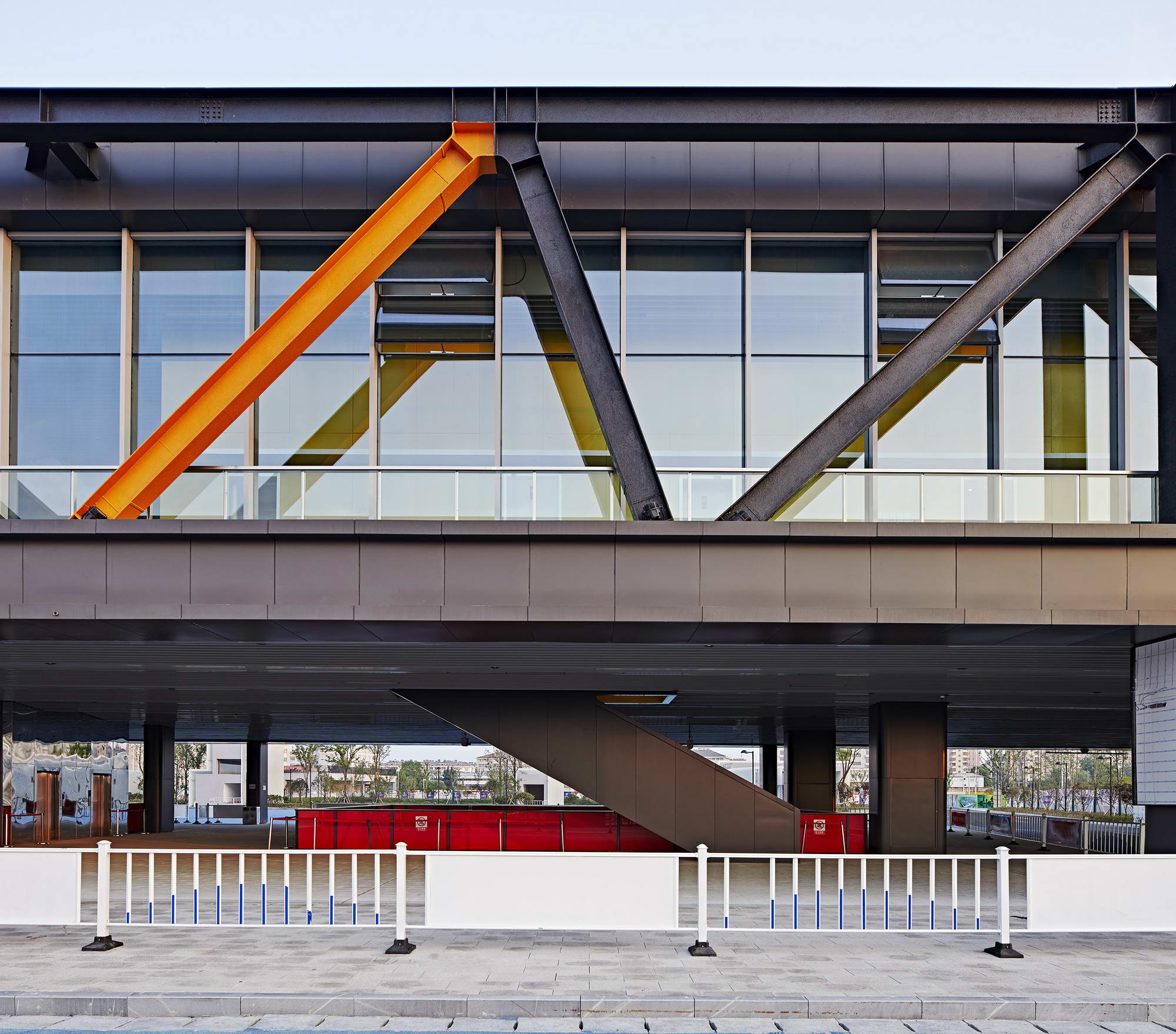
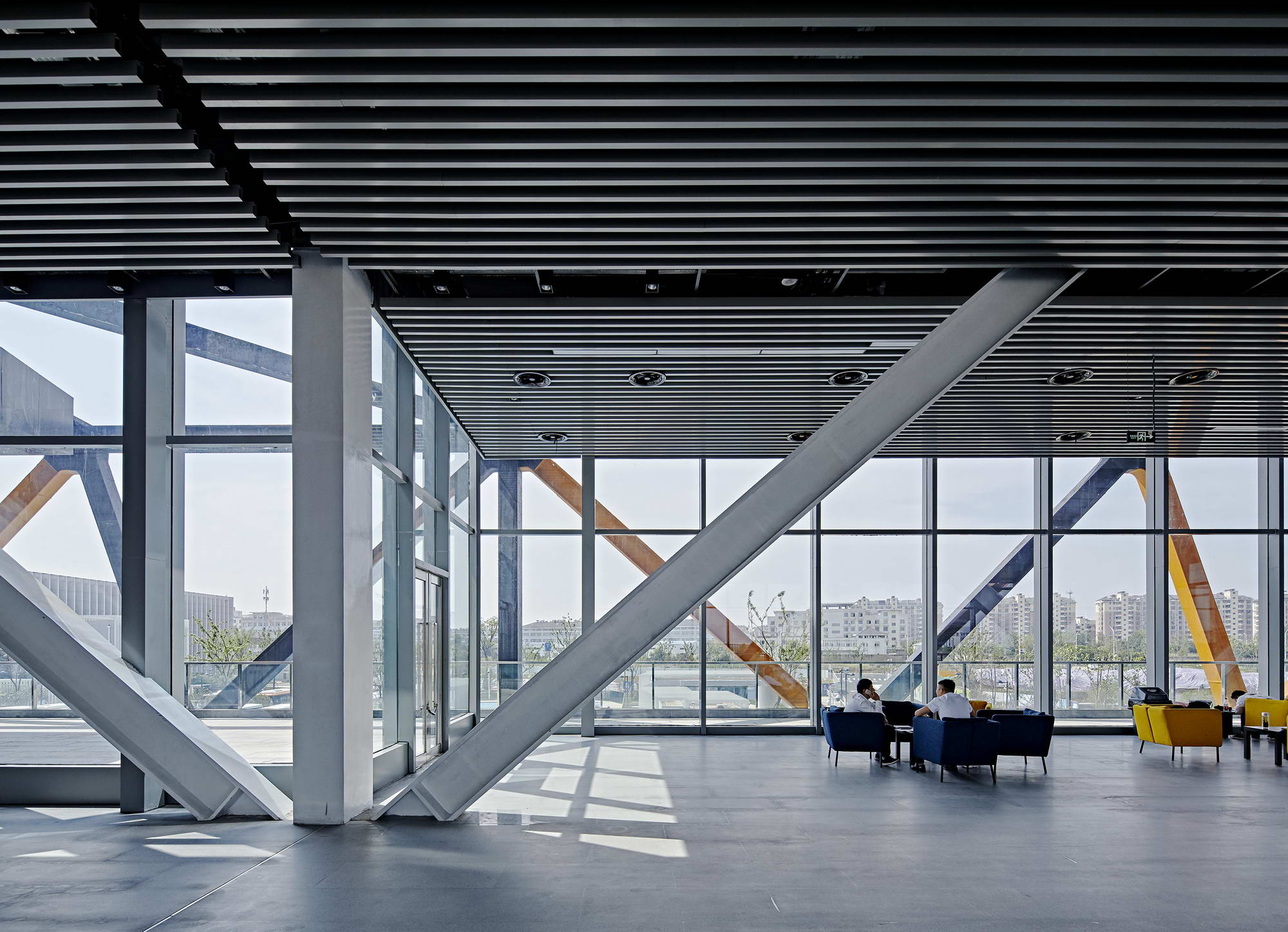
基础设施和动力学
infrastructure and kinetics
本案采用了象征手法,诗意地探索了基础设施和动线。公共汽车站如同一座横跨“沥青海洋”的桥梁,是一个人性化的、稳定但不静止的基础设施。
The architecture explores the iconography and poetics of infrastructure and movement. The bus station is a habitable and stable (but not static) piece of infrastructure – a bridge that spans the sea of bitumen.
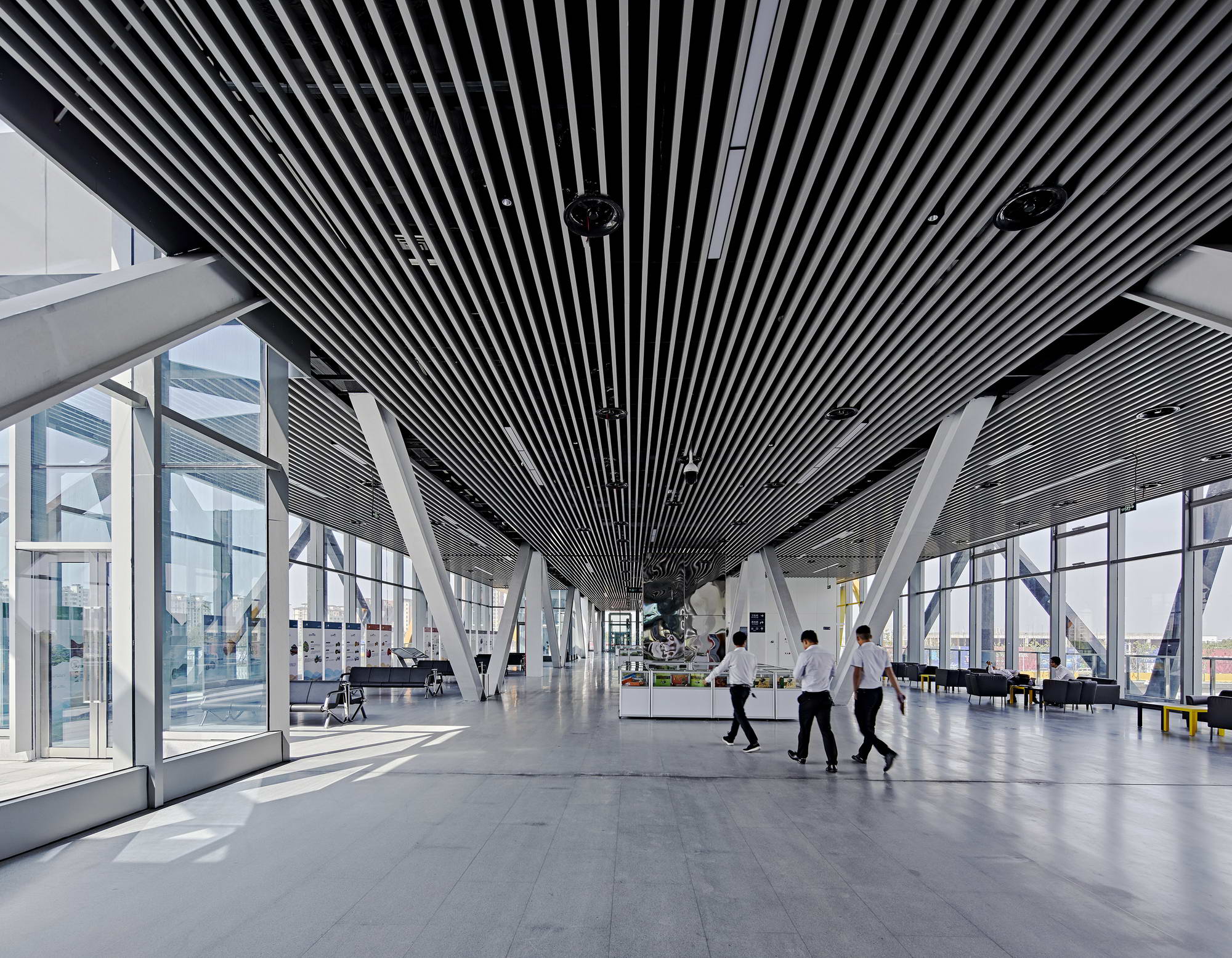
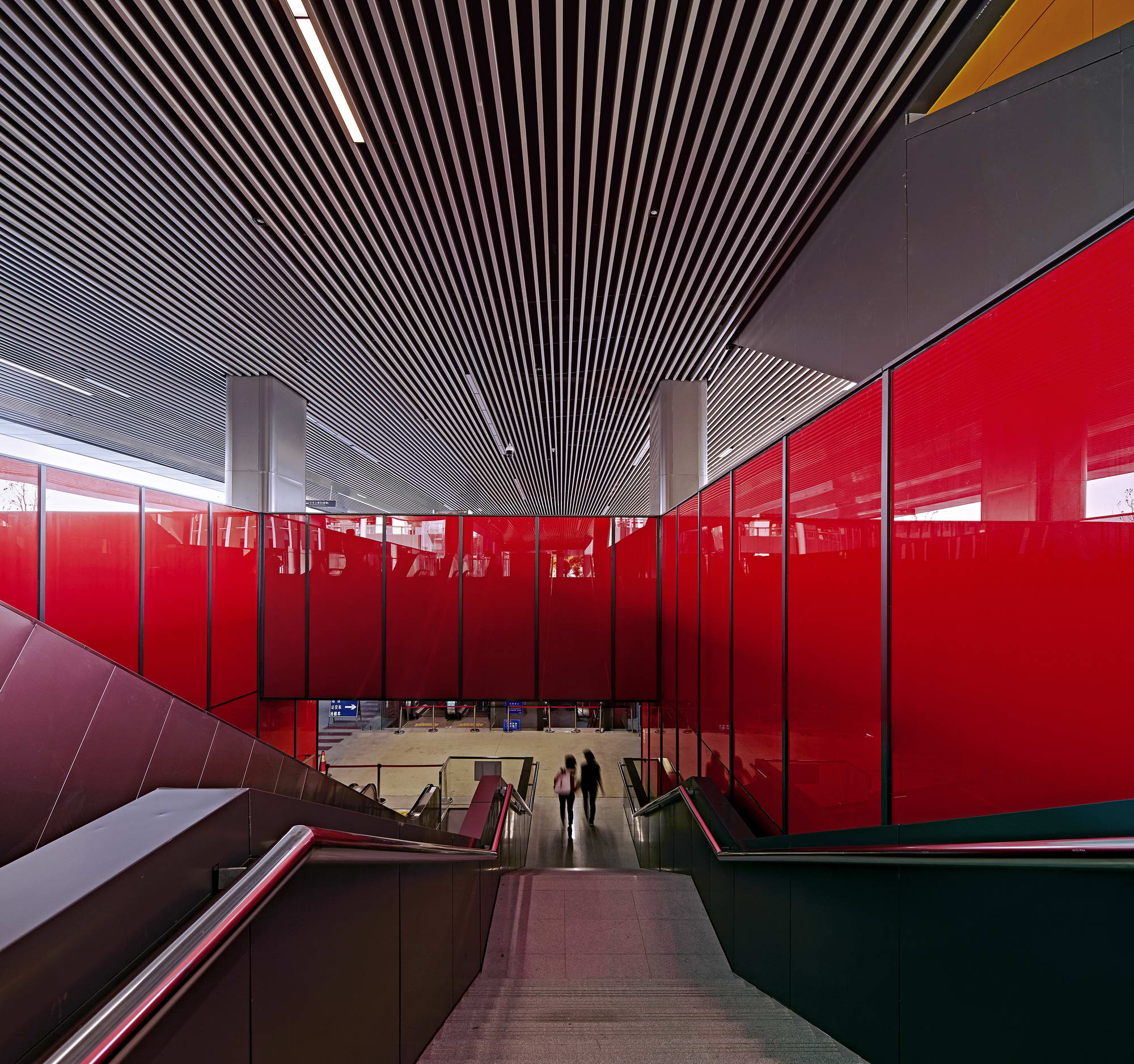
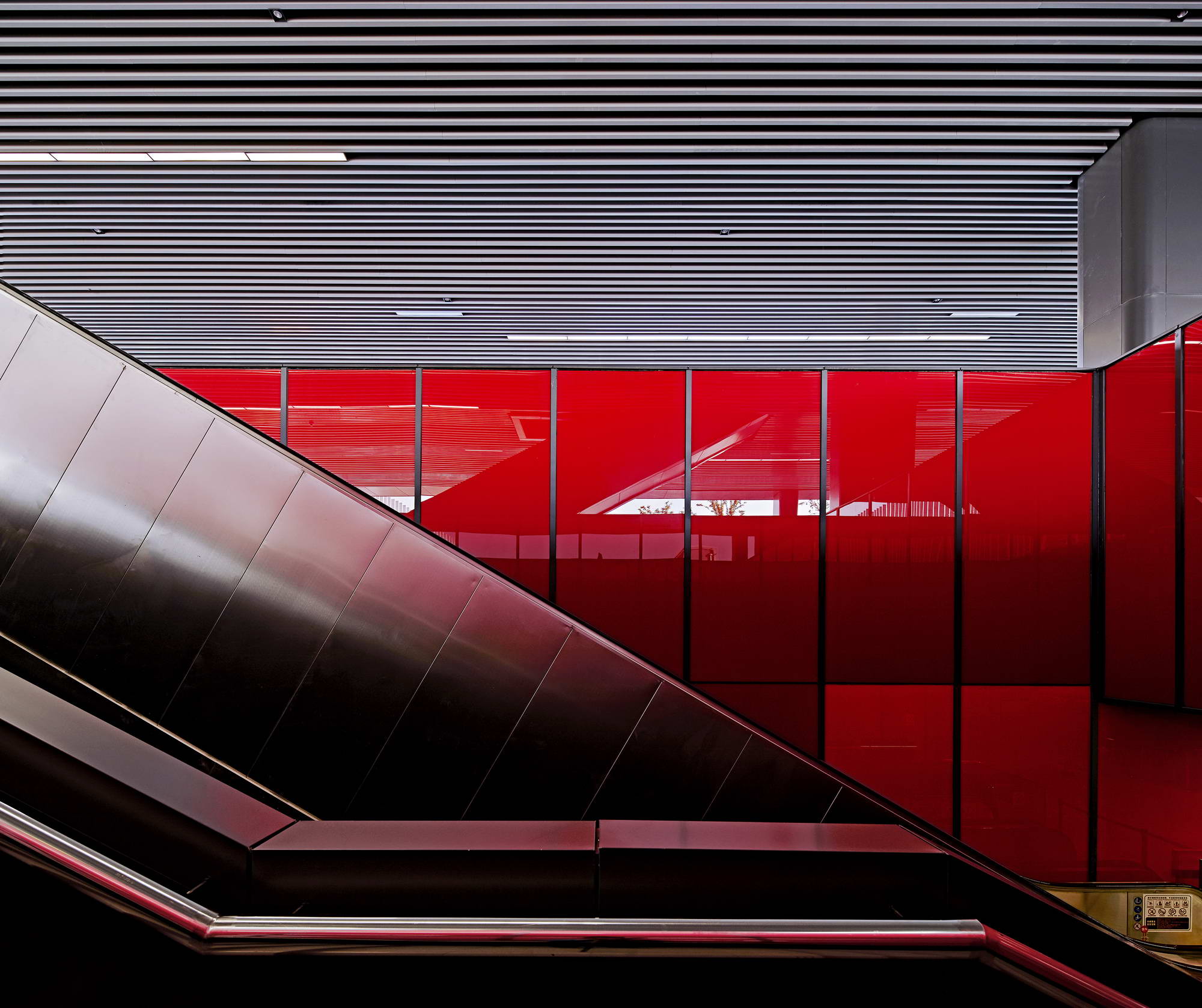
相比而言,高淳交通枢纽中心更像是一件大型的视幻艺术作品。它跨越铁路轨道,如一座岛屿一般稳稳落在”石板路海洋”和”沥青海洋”之间。各建筑功能沿着轨道延伸,被大规模的叶片状外壳包裹并遮掩。外壳上的叶片长度各不相同,使建筑外墙呈现动态的帷幕效果,同时,切割手法使这些叶片之间预留出入口,并减少太阳对室内的直晒热量。
In contrast, the train station is large-scale op-art piece. This building straddles the rail line becoming an island in-between the sea of paving and the sea of bitumen. The various pragmatic elements of the program are spread along the rail line. This assemblage of smaller elements is wrapped with a single large-scale gesture, a series of dynamic blades of varying lengths, which at speed will create a kinetic veil. These blades are cut to provide entries and exits and will also protect the interior of the building from the heat gain of low altitude east and west sun.
▽ 效果图
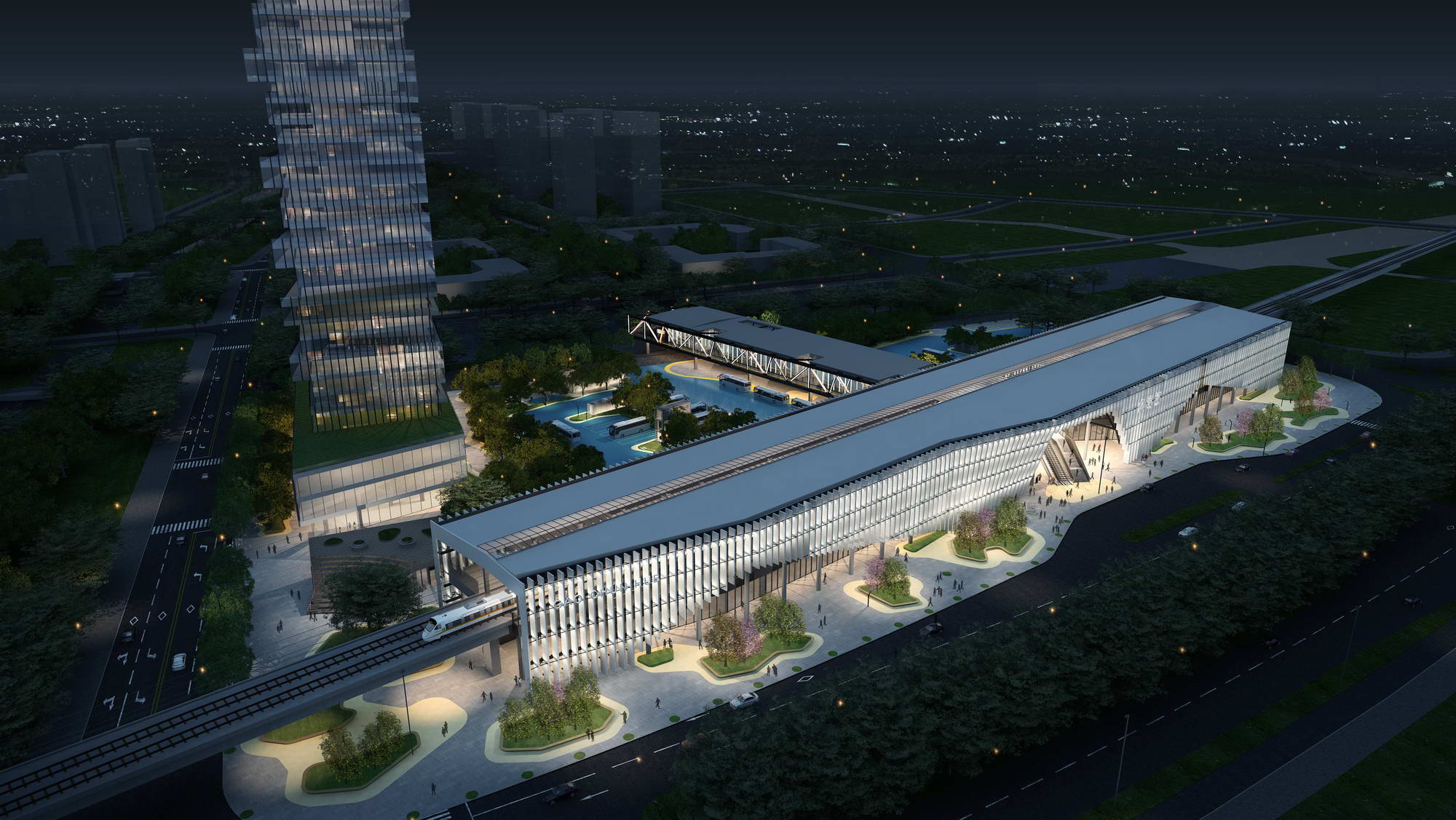
▽项目图纸
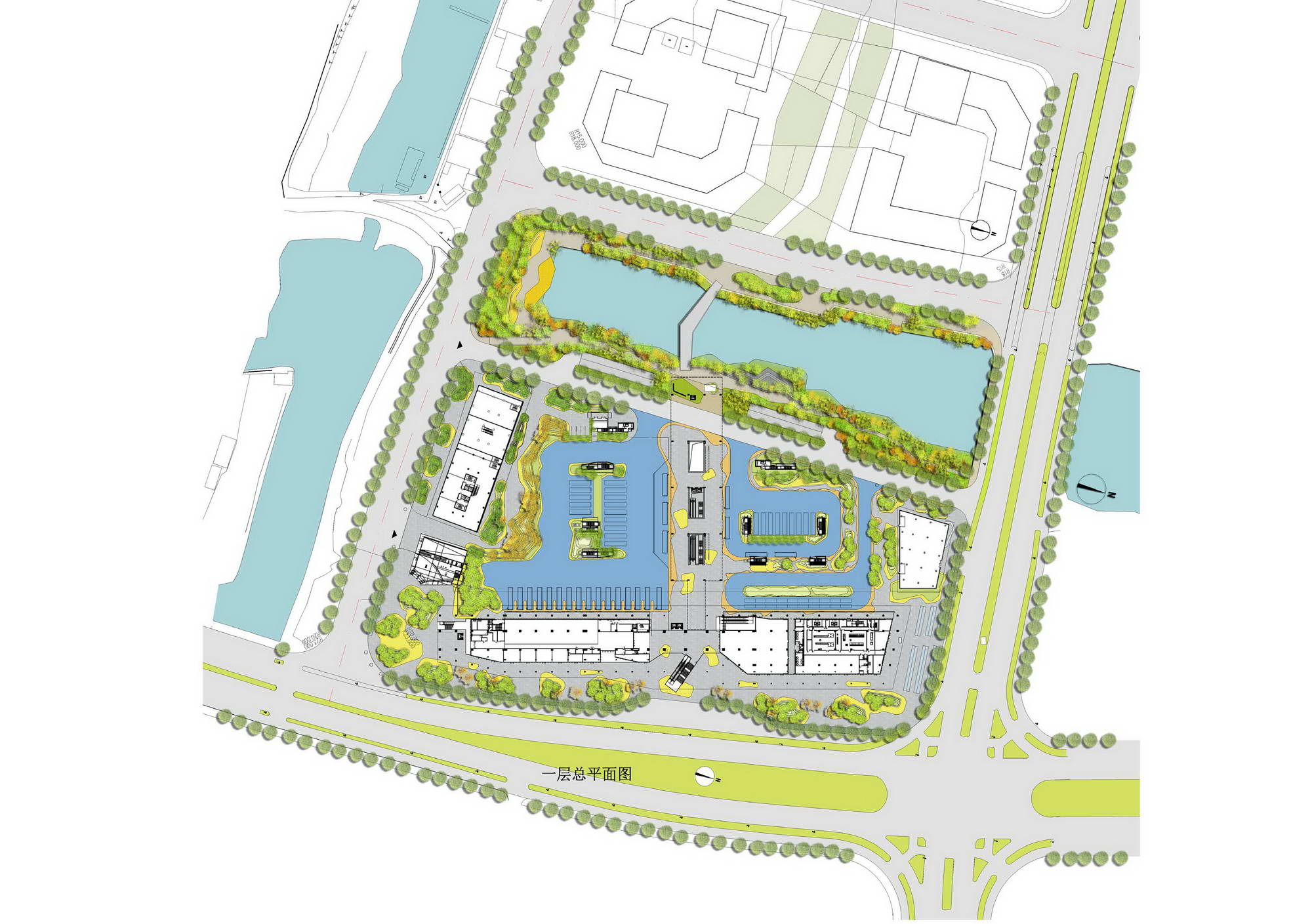
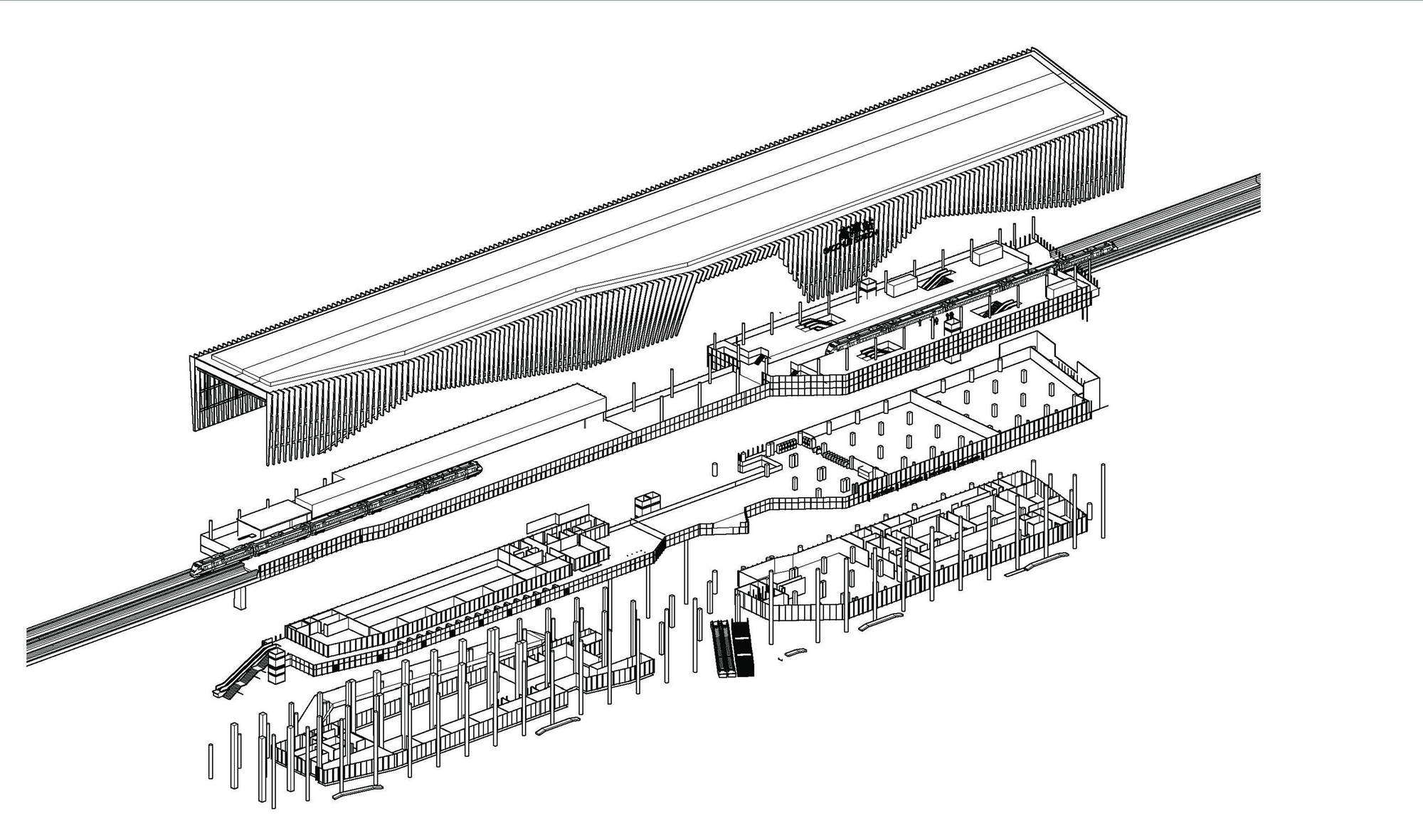
项目信息
Project Data
项目情况:2018年竣工
Project Status: Completed 2018
地点:南京,高淳区
Location: Gaochun District, Nanjing
年份:2015
Year: 2015
客户:南京淳科实业发展有限公司
Client: Nanjing Kechun Industrial Development Co., Ltd
建筑面积:20,000平方米
Construction Area: 20,000m2
类型:交通枢纽中心
Typology: Transport Interchange
功能项目: 高架地铁站,长途客运站,城市公交站
Program: Elevated metro station, long-distance bus station, city bus station
BAU项目组成员:
BAU Project Team:
建筑:黄骅、夏文、 Gonzalo Fernandez、Daniela Gonzalez Badillo、Billy Voon、刘敏杰、高剑峰、高卫国、倪坚友、顾佳妮、Jens Eberhardt、Steve Whitford、James Brearley
Architecture: Huang Hua, Xia Wen, Gonzalo Fernandez, Daniela Gonzalez Badillo, Billy Voon, Liu Minjie, Gao Jianfeng, Gao Weiguo, Ni Jianyou, Gu Jiani, Jens Eberhardt, Steve Whitford, James Brearley
景观:程琪、陈小萌、董利苹、雷涛、师政婷
Landscape: Chen Qi, Chen Xiaomeng, Dong Liping, Lei Tao, Shi Zhengtin
室内:朱秀兰、王明栋、郭月姣、邹玉海
Interior: Zhu Xiulan, Wang Mingdong, Guo Yuejiao, Zou Yuhai
BIM:王明栋、郭月姣
BIM: Wang Mingdong, Guo Yuejiao
施工单位:中铁上海工程局有限公司
Contractor: Shanghai Civl Engineering Co.,Ltd of CREC
建筑配合设计院:
一期:中铁第四勘察设计院集团有限公司
二期:中设设计集团股份有限公司(原江苏省交通规划设计院股份有限公司)
Documenting Architects and Engineer:
Stage 1: China Railway Siyuan Survey and Design Group Co.,Ltd
Stage 2: Zhongshe Design Group Co.,Ltd. (formerly Jiangsu Transportation Planning and Design Institute Co.,Ltd.)
室内设计公司:深圳广田装饰集团股份有限公司
Interior architect: Shenzhen Grandland Decoration Group Co., Ltd
3D渲染:BAU
3D Rendering: BAU
摄影:舒赫
Photographer:Shu He